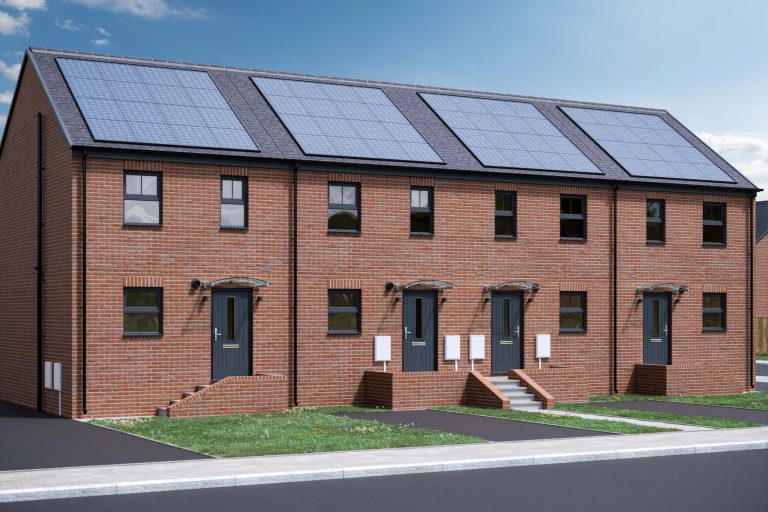The build-to-rent (BTR) market is bigger and more diverse than it has ever been. Once largely the domain of students and young professionals in big cities, the demand for rented property is skyrocketing, with developers that had previously worked to more well-worn revenue models now looking at how to get a slice of the pie. What’s more, getting the right partners involved can help steer the direction of travel down the most profitable road, according to Paul Staley, managing director of BTR specialist Wise Living. The BTR market has grown rapidly in the past decade or so, largely off the back of investment from the U.S and Europe. While the rental market in the UK is behind the curve set in central Europe – where in some countries around half of homes are rented – the rising cost of owning a home is going to be a catalyst for the ever-increasing number of people in this country viewing renting property as a viable, long-term option. With the average house price in this country in the region of £270,000, households would realistically need to have a sizeable deposit and combined income in excess of £50,000 to even be considering a mortgage of that size. Factor in the cost-of-living crisis, and the challenges of society are beginning to stack against home ownership. The make-up of the BTR market is something that has developedorganically, and while investors are beginning to see the nuance, it can often be difficult to proceed without the right partners involved. The student market has been well established for decades now and is often seen as an easy win for investors, but it is the emerging sectors in which the most opportunity lies. The new breed What is clear is that BTR now means so much more than the previous perception of student flats, and as the sector grows, this will start to become more apparent to investors, housebuilders and – most importantly – prospective tenants. The newest element to the BTR mix is the single family – those cohabiting rather than sharing, typically with dependents and looking more at suburban housing rather than city centre apartments. This market is usually based around two-or-three-bed family homes and is one that is going to be of increasing relevance to investors and developers. The main barrier is therefore not the lack of opportunity, but how we as an industry make the transition to delivering more BTR schemes by changing perceptions. For instance, if a developer has become quite comfortable selling houses on the open market, making a reasonable margin and ticking over, BTR is usually a topic that may only be discussed once a year before being shelved. However, in times where money is tight and the spectre of recession continues to loom, BTR becomes a highly viable way to de-risk a developer’s expansion. If they can work with the right partner, an upfront block of units is taken off their hands and begins to generate income at a quicker rate. The critical point there, however, is that it needs to be the right partner – one which can work with the developer on an end-to-end basis. Only then is the majority of risk ushered away, and only then will BTR be the best option. The key starting point is establishing the criteria for the where, how, and what of a BTR development. The wrong type of BTR in the wrong place will not maximise returns, and the standard open housing market model won’t work. As a result, developers and investors must factor in the planning early on to truly achieve a partnership model that is successful. Pinpointing the correct location As an example, at Wise Living the first thing we consider is the location. For those renters looking at the two-to-three bed single family homes we specialise in, being close to local amenities and good transport links is often a make-or-break situation. However, we also need to be aware on behalf of our partners of areas where capital values outpace rental values. The next step is looking at the product type with the housebuilder and ensuring that what is being offered is right for the target market and area. This is often a sticking point with developers when they ask for pricing against certain specifications, but equally it is where early engagement and clear discussions are most worthwhile. By working together closely at an early stage, schemes can be finessed. Fresh house layouts and types can be looked at and specifications developed to maximise return on investment, while also providing housing that is both high quality and value for money. This de-risking conversation is particularly pertinent when large and challenging sites are involved. Anywhere with potential groundwork issues and lots of remediation to be done would usually throw up significant red flags for developers and investors. Identifying a partner at an early stage that can take that risk on – paying for the land upfront, then dealing with the groundwork and infrastructure side – has its clear advantages. The earlier the conversation, the more the risk is shared, and the less capital is drained at the start of the project, where typically costs are at their highest. It’s a value solution that may not have been on the table before, but will be increasingly viewed as viable as the public demand for rented accommodation grows. Changing a mindset It’s no secret that private rental properties are some of the worst maintained properties in the UK, which is why there’s a lot of pressure through legislation to try and rectify standards across the board. At Wise Living, our end-to-end service proposition provides an altogether different experience and means that we can ensure quality at every stage. Because Wise Living also handles the letting process, vetting of tenants and the continued maintenance of the homes and surrounding greenery, this type of service is helping to debunk the perception that some rented housing can be unpleasant and not well-built or maintained. We can add value to a scheme, rather than detract from it as we work with our partners to create genuine family homes that are professionally managed without hidden fees. So, not only can a BTR partner like Wise Living provide reassurance in the early stages by helping to design the best scheme, take on challenging locations and buy the units as fast as they can be built – the tenants will also be happy. It’s a mindset that is changing among tenants, and investors and developers are catching on that there is a growing niche in the market, but only if you








